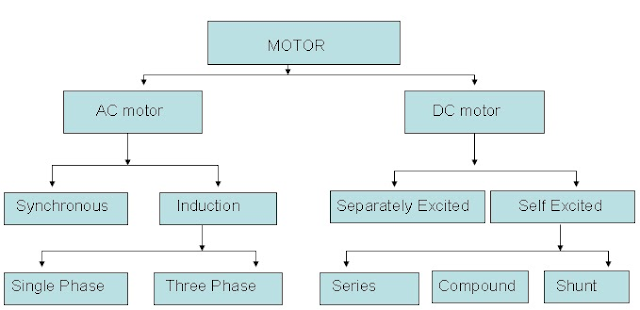Nowadays about 70% of all electricity in industry is used for providing electromotive force by driving electric motor. The beginning of development in electric motor is originated from discovery of Electromagnetic Induction by Michael Faraday.
 |
| Fig 1. Classification of Motor |
Motor is largely categorized by 2 parts : AC motor and DC motor. In fact, between these two types, there is also Brushless DC motor(BLDCM). It cannot be considered as a typical motor but we will figure it out later, not now. DC motor is divided into 2 types : Separatly Excited and Self Excited. It depends on how it makes Excitation power in order to generate magnetic flux in field coil of a stator.
AC motor is also divided into 2 types : Synchronous motor and Induction motor. It is not presented in diagram but Synchronous motor can be divided by 3 types : Permanent magnet, Wound Field and Reluctance. And in Permanent magnet. we use semiconductor, which is so important. So we will figure it out too, later.
AC motor is also divided into 2 types : Synchronous motor and Induction motor. It is not presented in diagram but Synchronous motor can be divided by 3 types : Permanent magnet, Wound Field and Reluctance. And in Permanent magnet. we use semiconductor, which is so important. So we will figure it out too, later.
댓글
댓글 쓰기